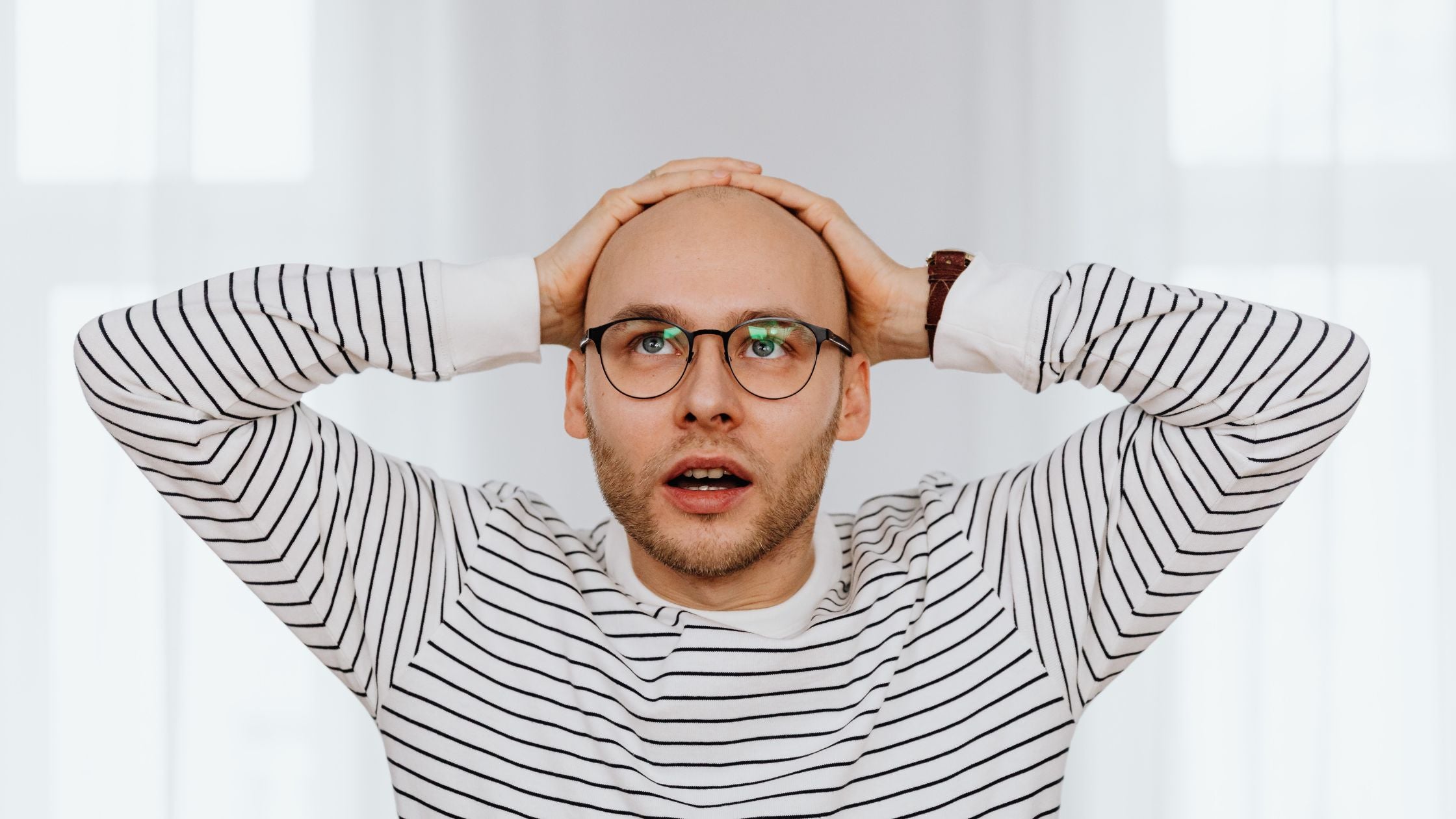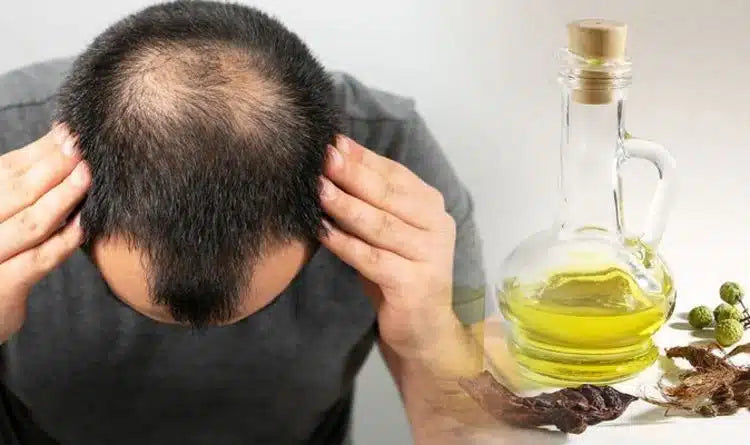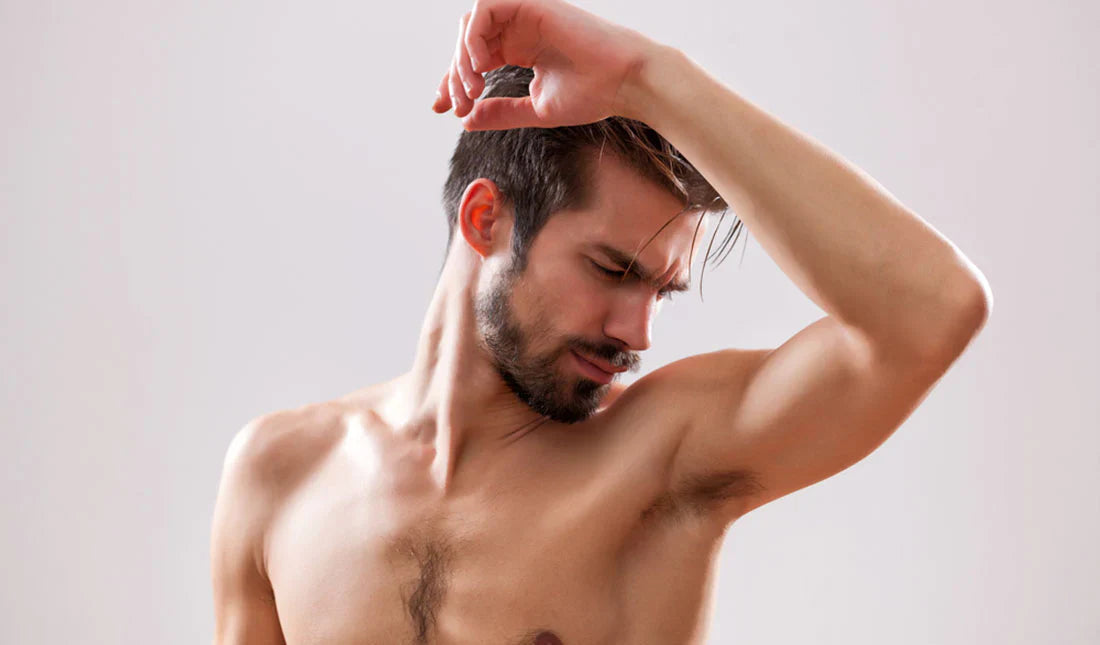Recognizing Signs of Balding at 20 and Effective Countermeasures
It’s not unusual to experience hair loss in your twenties, even if you notice more strands on the pillow or a clog of them in the shower drain. Knowing about early balding and recognizing its signs are key for countering it successfully. In fact, catching these indications earlier increases one’s chances to either halt or reverse this process – that’s why being aware is crucial! Suffering from “balding at 20” can be difficult emotionally speaking, but it doesn’t have to be insurmountable with adequate knowledge.
Key Takeaways
-
Early balding in the 20s can manifest as a receding hairline, thinning hair, and increased hair shedding, often influenced by genetic and hormonal factors as well as lifestyle choices.
-
Prevention and early intervention strategies for mitigating hair loss include proper nutrition (rich in vitamins, minerals, and proteins), stress management techniques, and gentle hair care practices.
-
Treatment options for those already experiencing balding include topical treatments like minoxidil, oral medications such as finasteride, and hair restoration procedures, complemented by seeking professional medical advice.
Understanding the Early Signs of Balding at 20
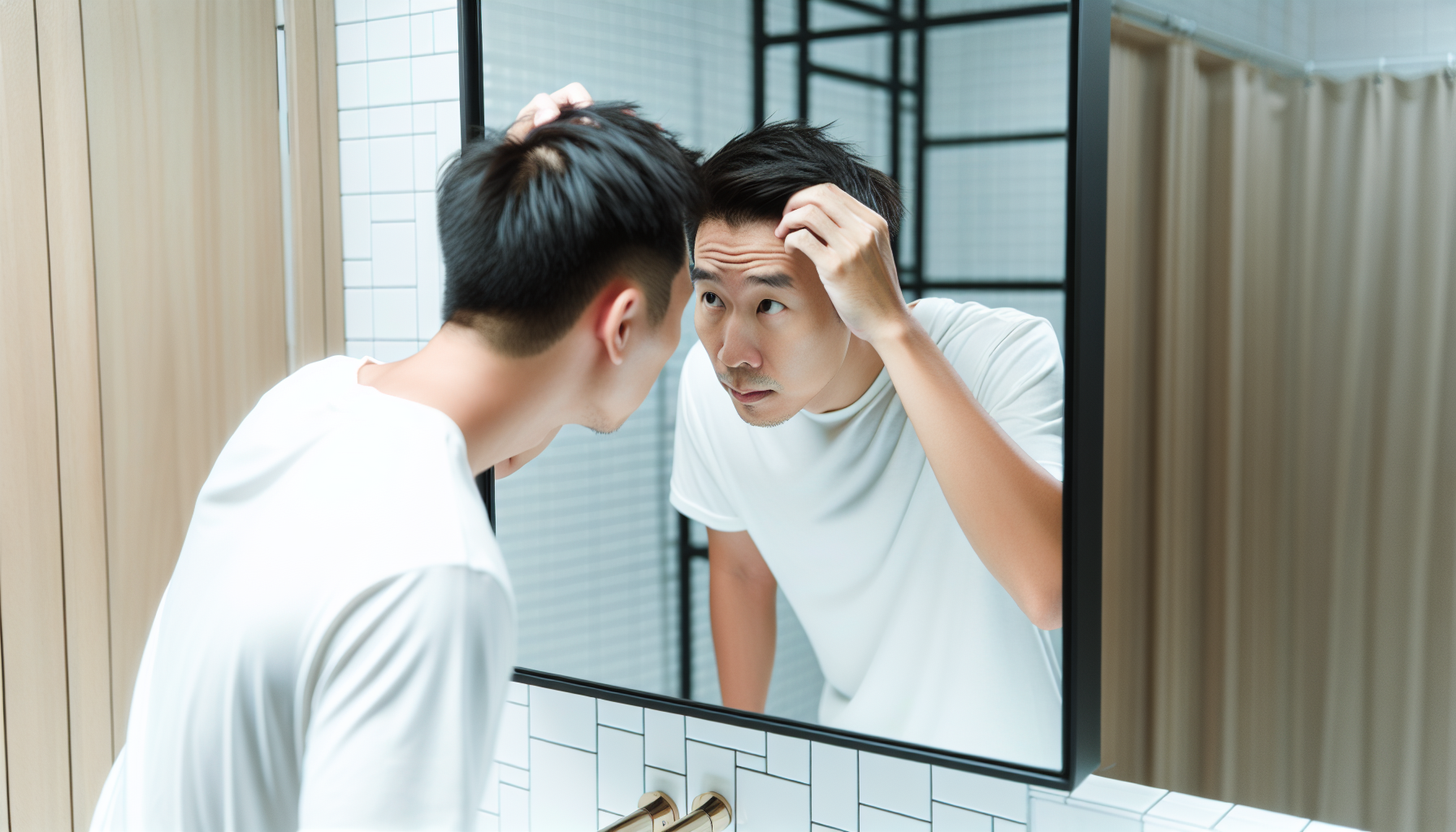
Understanding the symptoms of balding in your 20s is important for prompt treatment and prevention. Thinned hair, increased shedding, and a receding hairline are all warning signs to look out for. Monitoring these changes closely can help prevent Loss of locks as well as encourage early action towards tackling this issue. Hair loss at an earlier age isn’t unusual, so it’s essential to be familiar with what could potentially signal significant thinning or diminished density ahead if ignored over time.
Receding Hairline
A receding hairline is often the first sign of early balding and can present itself as changes in the shape of one’s hairline or difficulty styling. Comparing old photos with current ones could help detect a major difference that has occurred over time. Typically, men will see their hairlines begin to form an ‘M’ shape while women have rounder front sections on their forehead which don’t move backwards like it does for male pattern baldness - this usually begins at 25-35 but younger ages may experience it too. Taking note of any alterations in your hair is important if you wish to take proactive measures against damage being done to its health!
Thinning Hair
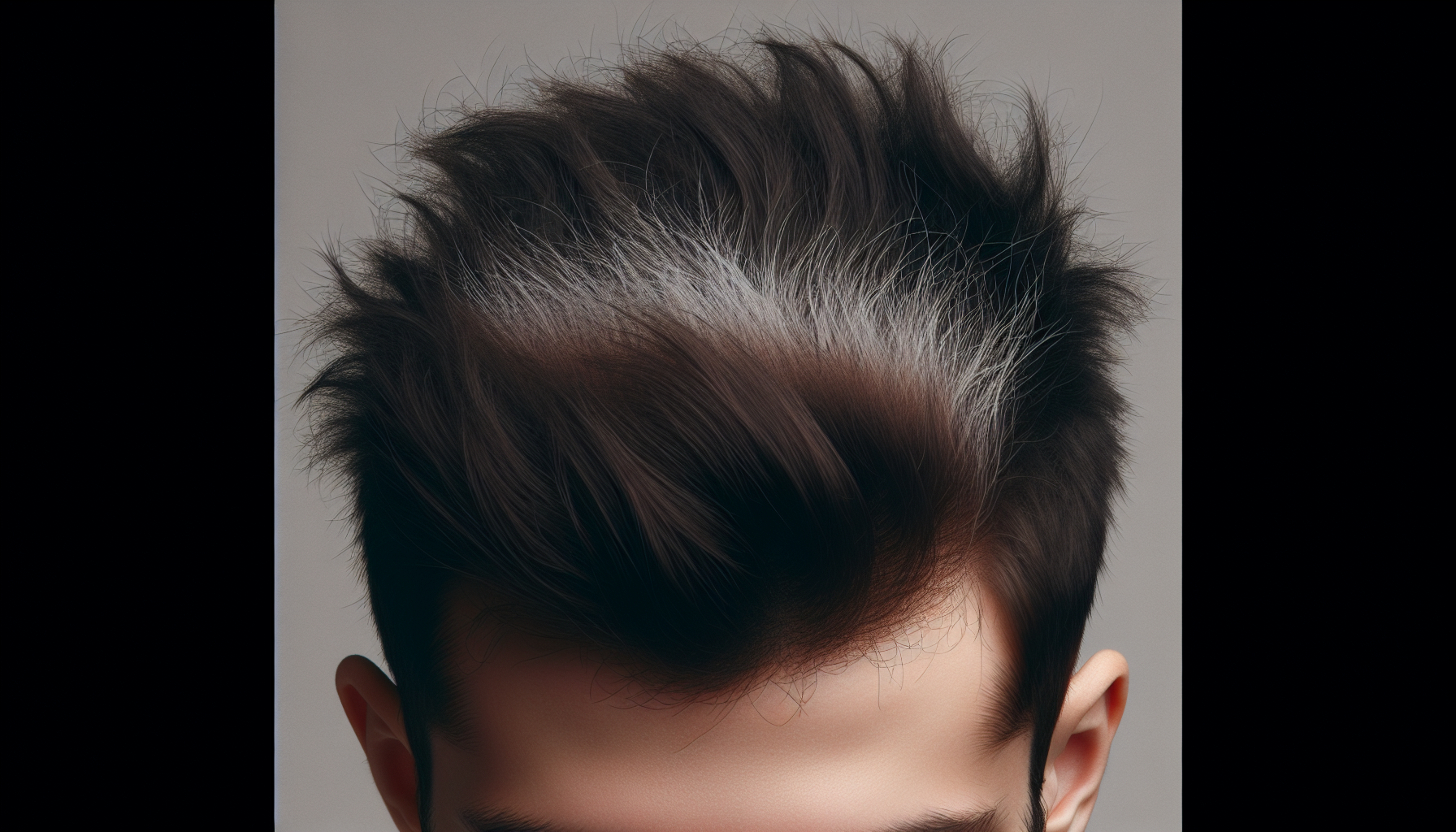
The scalp may become more visible due to shrinking hair follicles, which can cause a person’s locks to be thinner and finer over time. This type of balding is most apparent on the crown or top of the head where you might observe an increased width in parts. Losing excessive amounts beyond the average 50-100 hairs after brushing or showering could also indicate that thinning has begun earlier than anticipated. It is essential to understand that some shedding as part of the natural hair cycle should not raise alarm bells immediately. If more significant losses are encountered consistently, then this needs attention soon enough!
Increased Hair Shedding
Excessive amounts of hair being discovered on your pillow, in the shower or brush can be worrying. You may shed between 50-100 strands a day. If this number is higher then it could signify early stages of baldness. Being aware and observant can help detect when treatment would be most successful to combat thinning hair loss. It’s recommended for anyone who notices drastic increases in their shedding rate to see a medical expert as soon as possible so they can identify why it occurs and how best to treat it accordingly.
Common Causes of Balding in Your 20s
We have analyzed the initial indicators of balding, and now we will take a look at some of its standard sources. Many people put the blame for their diminishing hairline or thinning crown on plain bad luck. What is causing male pattern baldness in individuals in their twenties could be something more profound. This can involve hereditary aspects, fluctuations with hormone levels and lifestyle elements too.
Understanding these causes may assist you to come up with plans that aid in treating existing hair loss as well as prevent Damage from occurring to your tresses.
Genetic Factors
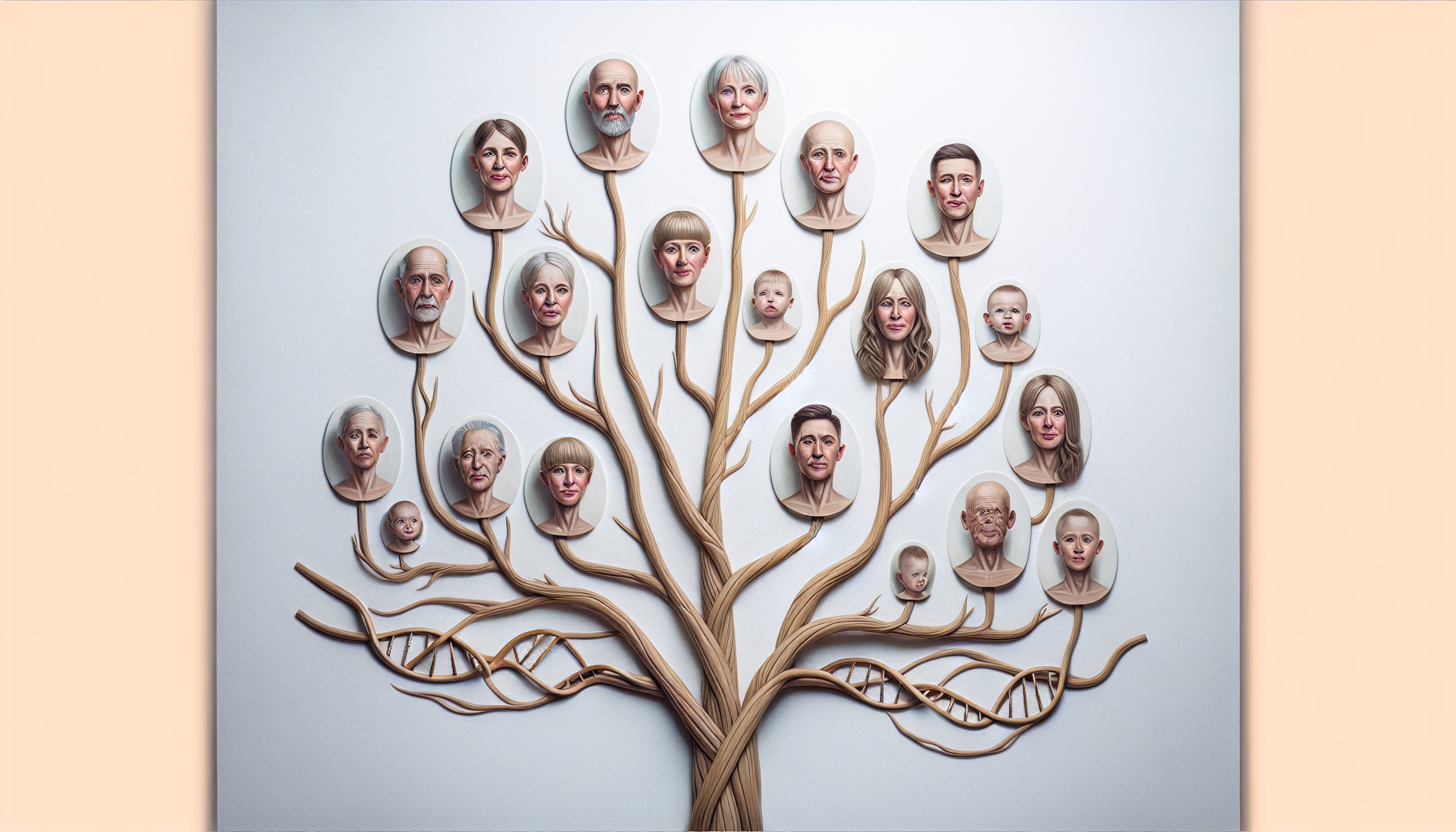
Hereditary hair loss could be the cause of losing your hair if it runs in your family, especially at a young age. Male pattern baldness and female pattern hair loss have been linked to genetic factors like androgenic alopecia. Which affects how sensitive one’s follicles are when exposed to hormones that make them shrink leading to thinning tresses or complete baldness. It would then be wise for those who come from families with early onset of such disorders to monitor their own life closely.
Hormonal Imbalances
Hair growth is greatly affected by hormone imbalances, which can cause a range of conditions such as hair loss, thinning or baldness due to the shrinking of hair follicles caused by dihydrotestosterone (DHT). Medical issues related to endocrine system malfunctions may disrupt normal hair development. Hypertrichosis and hirsutism are two common problems that result in severe and permanent types of alopecia - specifically named ‘alopecia areata’ for patchy balding spots on different areas all over the scalp - or alternatively ‘androgenetic alopecia’- male patterned receding from front side lines onwards. All these maladies have something in common: they all involve an impairment with regards to maintaining healthy functioning levels when it comes to our beloved tresses!
Lifestyle Factors
Hair is an indicator of overall health, and lifestyle choices play a significant role in the vitality of hair follicles. Poor diets lacking essential nutrients like protein, fatty acids, zinc or managing stress can contribute to early balding by interfering with hair growth cycles. Maintaining balanced nutrition and reducing levels of stress are important for sustaining healthy locks on your head!
Prevention Strategies for Hair Loss in Your 20s
It is important to not just be aware of the causes and symptoms associated with hair loss, but also take proactive steps in order to prevent it. With a healthy diet, stress reduction techniques and appropriate care for your mane, you can help lower the possibility of premature balding significantly. Let us now go into Detail about these approaches.
Proper Nutrition

The old adage “You are what you eat” applies when it comes to the health of your hair. Eating a balanced diet full of nutrients such as Vitamin A, Iron, B vitamins (B6 and B12), folic acid, biotin, vitamin D and C along with zinc is key for strong and healthy growth. As part of this regimen one should opt for lean meats like chicken or fish paired with eggs plus soy products while dark leafy greens provide high nutritional value adding goodness to aid in promoting luscious locks. When working towards the goal of vibrant hair, incorporating these foods into your everyday meals will help give positive results that can be seen instantly once implemented properly along with good hygiene practices using quality shampoos and conditioners also plays an important role too!
Stress Management
Stress is a normal part of life, but when it remains constant, it can interfere with the usual hair growth cycle, which then causes slower hair development and might result in stress-related baldness. In order to prevent this issue from occurring, effective techniques for managing anxiety must be implemented.
Yoga exercises, meditation or even mindfulness practices combined with deep breathing will aid in reducing your levels of tension. Doing physical activities regularly may also lower strain by producing endorphins - natural enhancers of one’s mood as well as promote better blood circulation into the scalp thereby inducing healthier hair regrowth.
Gentle Hair Care Practices
It is essential to take proper care of your hair in order to preserve its health and promote growth. If not, the scalp can become stressed out due to using harsh treatments that ultimately lead to loss of hair. It is vital to adopt gentle methods for looking after locks if you want them in optimal condition.
To ensure healthy tresses, there are a few things one should do: avoid styles such as tight ponytails or dreadlocks which put too much pressure on follicles, use kinder products without sulfates or parabens, treat the head with nourishing oils like coconut oil from time-to-time. Following these tips will be helpful when striving for a beautiful man!
Treatment Options for Balding at 20
If you’re noticing hair loss, do not despair. There are options that can assist in slowing the balding process and even regrowing some of your hair. Such treatments include topical medications, oral medicines, as well as procedures for restoring lost locks. To get a better understanding about them, we will need to inspect each option closely.
There’s no doubt prevention is ideal when it comes to avoiding thinning or receding hairlines, but if this is something already affecting you, there still might be hope! From lotions and potions through to more invasive approaches such as surgery - familiarizing yourself with what choices are available could make a huge difference in trying desperately hang onto your mane (and possibly improve upon it!).
Topical Treatments
Minoxidil is a great relief for those suffering from premature hair loss. The liquid or foam form of this topical treatment aids in increasing circulation, preventing the miniaturization of follicles and stimulating new hair growth. Usage should be consistent as advised. 1 mL applied to the scalp twice daily. Hair regrowth can occur within 4-8 weeks, but it may take up to 6 months until maximum effects are visible on your strands.
Oral Medications
Hair loss can be effectively addressed with finasteride oral medication. This prescription drug works by preventing DHT hormones from affecting hair follicles and promoting a decrease in baldness over time. The recommended dosage for treating male pattern alopecia is 1 mg taken once daily, with results visible after six to nine months of consistent use. Hair loss sufferers should look no more than this tried-and-true method as it continues to prove successful at preserving the appearance of their locks.
Hair Restoration Procedures
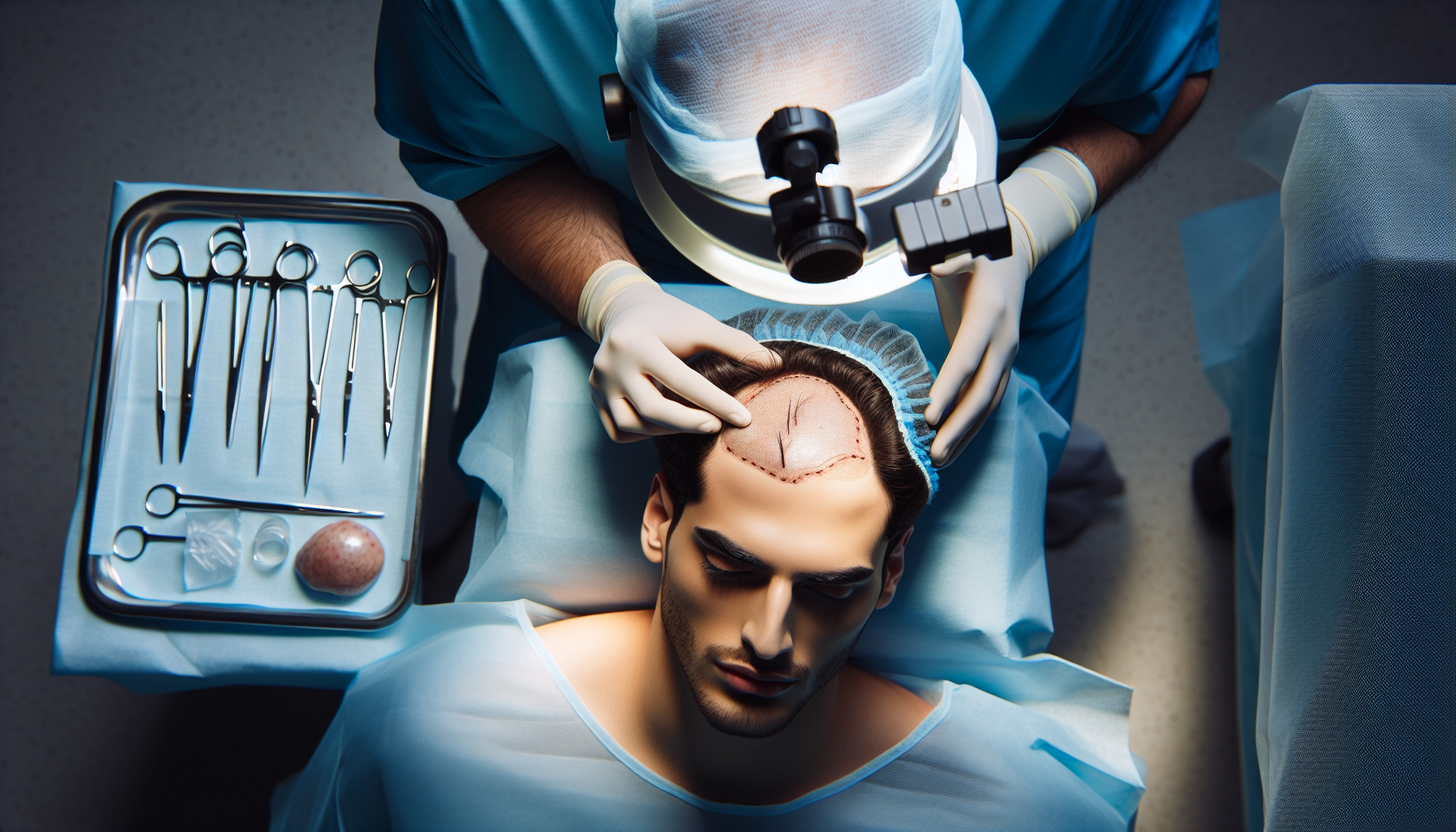
For people dealing with severe hair loss, procedures to restore their locks like scalp reduction and transplants can provide a long-term solution. The surgery for this involves extracting healthy follicles from the donor area on the head of the patient and implanting them in areas affected by thinning or baldness, all performed by a specialist surgeon.
Hair transplant operations report an incredibly high success rate, estimated to be between 90% and 100%, making it quite possible as an alternative choice. Even though there are some risks associated with any surgical procedure such as swelling, inflammation, pain etc., they have proven beneficial results overall when it comes down to regaining lost strands of hair effectively.
Seeking Professional Help
Recognizing the indicators of balding and taking preventive actions is a great start, but it’s just as crucial to consult an expert. A dermatologist or hair specialist can make sure that you get an exact diagnosis and suitable treatment plan, targeting both the symptoms and the cause behind your thinning hair.
Don’t be afraid to seek advice from experts— whether for confirmation on early signs of baldness or talking about potential treatments. They have suggestions for managing scalp issues which may result in loss of hair, also prescribing medications such as finasteride & minoxidil along with recommending shampoos & conditioners appropriate for dealing with these problems.
Summary
For someone in their twenties, the onset of hair loss can be a difficult situation to manage. Having awareness and access to resources enables you to handle or even reverse this condition. It is important that you keep an eye out for early indications and identify potential root causes so as not to have any delays on treatment.
To prevent Thinning from occurring, it’s recommended that one maintains healthy diet habits along with stress relief methods coupled with delicate care strategies when grooming your locks - though if baldness has already been experienced, don’t hesitate in speaking up about seeking professional help! With timely action taken, alopecia doesn’t need cause too much disruption down your life path.
Frequently Asked Questions
Is it normal to start balding at 20?
As many as 80% of guys may experience hair loss at some time in life, which can include balding starting from age 20.
Will I go bald if my dad is?
Although the baldness variant on the AR gene may not have been passed down from a mother, hair loss can still occur in sons if their father is bald. A study showed that out of all those with thinning hair or total balding, 81.5% had fathers who were already affected by it too.
Is receding hairline at 20 normal?
At the age of 20, it is common to experience receding hairlines, which can even start from 18 and tend to increase up until 30. This type of hair loss accelerates with time.
What are the early signs of balding in your 20s?
If you have noticed a thinner hairline, thinning of the locks and increased shedding at an early age (20s), these could all be indications that balding has started. It is best to talk with a dermatologist for personalised advice and remedies suited to your needs.
How can I prevent early balding?
Maintaining a healthy diet, controlling your stress levels and using mild hair care routines are all key to preventing premature balding. Ensuring adequate nutrition is vital in order to keep your scalp and hair strong.

